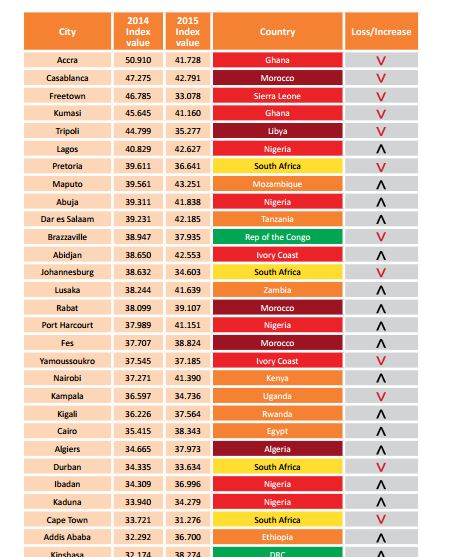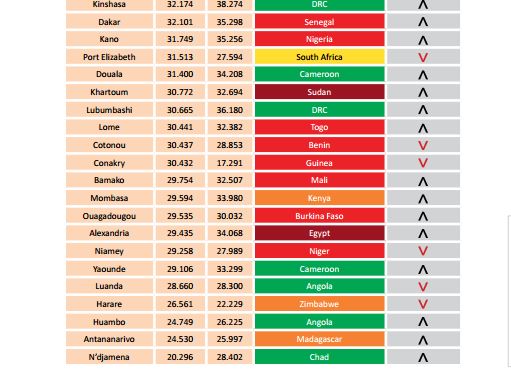Assembled by research methodologist, Prof. George Angelopulo and powered by Mastercard, The African Cities Growth Index 2015 is a unique lens for viewing the future of the continent. The index focuses on ranking urban cities based on indicators like electricity, water, sanitation, health and household consumption. It also cites industrialization as the only pathway to development while showing that the dynamic and fast growing cities in Africa could be locations of economic transformation for the continent.
According to the report, the African Cities Growth Index (ACGI) assesses economic factors but also includes dimensions of agglomeration (an extended city or town area comprising the built-up area of a central place (usually a municipality) and any suburbs linked to a continuous urban area) and a range of social indicators. However, while it is not an explicit measure of inclusive growth, it reflects the inclusive growth potential of cities.
Of the cities featured in the ACGI, each is grouped according to three classes; large cities – population over one million, medium cities – population between 500,000 and one million and small cities – population under 500,000. 31 cities show an increase from last year’s index, while 18 show a decline in index value from 2014.


Cities with index values greater than 50 fall into the high growth potential range, those scoring 40 to 49.99 fall into the medium to high growth potential range, those between 30 to 39.99 go into the medium to low growth potential range and those scoring less than 30 fall into the low growth potential range.
The ACGI report concludes that population plays a significant role in the development of urbanization on the continent in major cities like Lagos. According to the report, consumption is playing a greater role in most of Africa’s urban economies with increasing disposable income and fast growing urban populations.
For instance, Lagos has a population of 13 million; Cairo; 12 million, Kinshasa; 10 million, Luanda; 6 million, Cape Town and Ibadan have just over three million inhabitants. Africa’s cities have a combined population of 200 million people, a $1 trillion Gross Domestic Product (GDP), half a trillion dollars consumer spend, 17 million middle income households and 80 percent of the continent’s high income households.
In the same vein, the Independent reported in August 2015, that the continent will experience substantial population growth by 2100. “Africa’s share of the global population is projected to grow to 25 percent in 2050 and 39 percent in 2100.”








